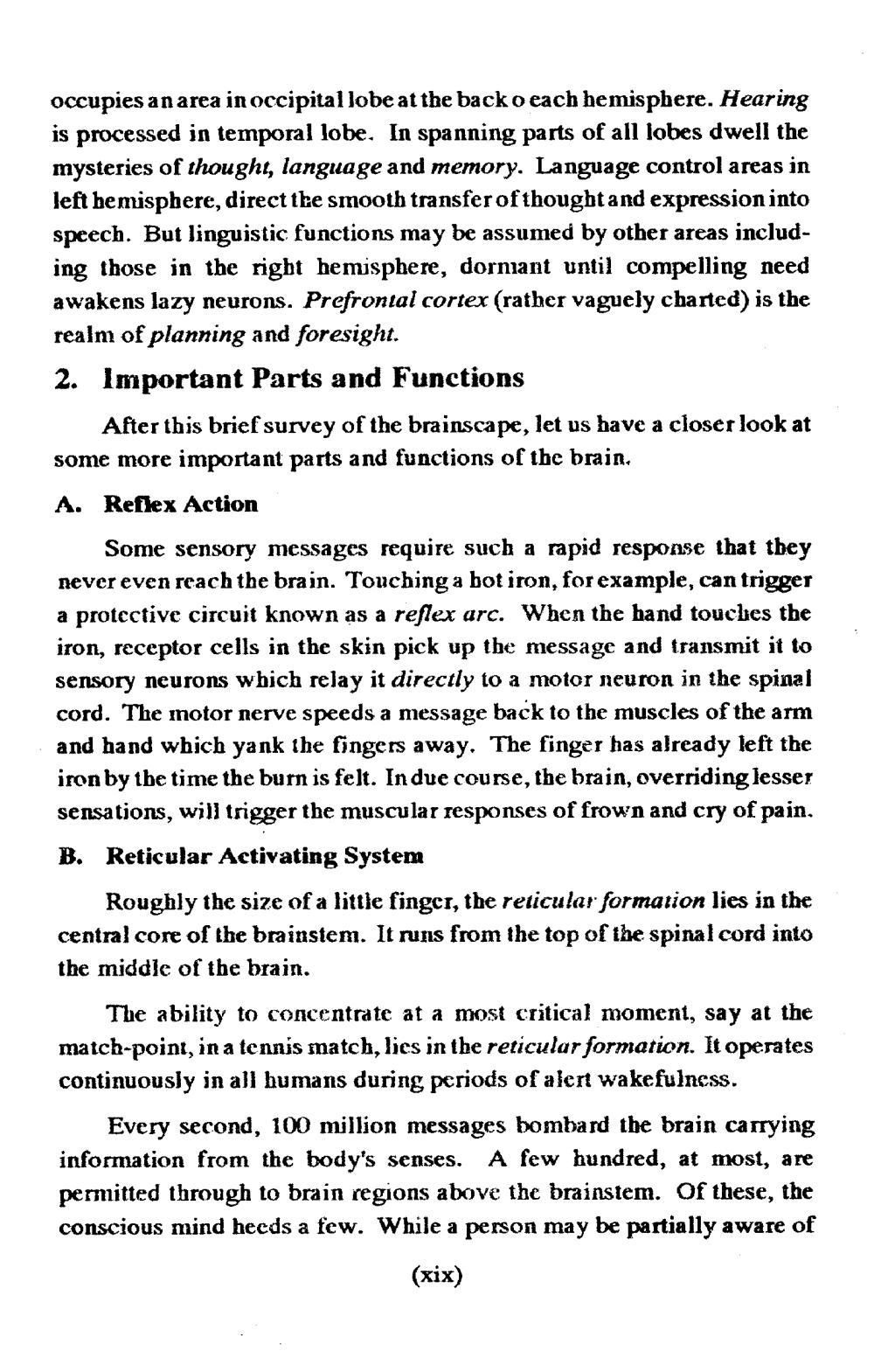________________
occupies an area in occipital lobe at the back o each hemisphere. Hearing is processed in temporal lobe. In spanning parts of all lobes dwell the mysteries of thought, language and memory. Language control areas in left hemisphere, direct the smooth transfer of thought and expression into speech. But linguistic functions may be assumed by other areas including those in the right hemisphere, dorniant until compelling need awakens lazy neurons. Prefrontal cortex (rather vaguely charted) is the realm of planning and foresight. 2. Important Parts and Functions
After this brief survey of the brainscape, let us have a closer look at some more important parts and functions of the brain. A. Reflex Action
Some sensory messages require such a rapid response that they never even reach the brain. Touching a bot iron, for example, can trigger a protective circuit known as a reflex arc. When the hand touches the iron, receptor cells in the skin pick up the message and transmit it to sensory neurons wbich relay it directly to a motor neuron in the spinal cord. The motor nerve speeds a message back to the muscles of the arm and hand which yank the fingers away. The finger has already left the iron by the time the burn is felt. In due course, the brain, overriding lesser sensations, will trigger the muscular responses of frown and cry of pain. B. Reticular Activating System
Roughly the size of a little finger, the reticular formation lies in the central core of the brainstem. It runs from the top of the spinal cord into the middle of the brain.
The ability to concentrate at a most critical moment, say at the match-point, in a tennis match, lies in the reticular formation. It operates continuously in all humans during periods of alert wakefulness.
Every second, 100 million messages bombard the brain carrying information from the body's senses. A few hundred, at most, are permitted through to brain regions above the brainstem. Of these, the conscious mind hecds a few. While a person may be partially aware of
(xix)




